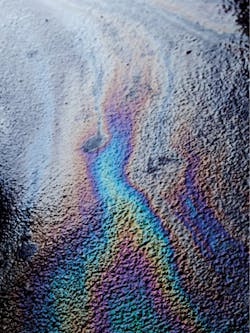Earlier this fall, I was invited to help some friends of mine at a sort of science fair a local school was hosting. Groups and individuals from the community had set up tables in the school’s courtyard to introduce students to various STEAM (Science, Technology, Engineering, Arts, and Math) topics. There was a beekeeper with a plexiglass box of buzzing bees, a robotics team from the university, and someone who had made a Tesla coil in their garage from electronic waste.
The event was on a Friday evening and my job was just to stand at my friend’s table and field students’ questions. I like kids, and it was a nice start to my weekend. The table next to us caught my eye, though, and I had to laugh—even when I’m not in the office, stormwater is everywhere.
On the table was a rough plastic model of a town. There were toy buildings and cars and a plastic bridge over a small channel representing a river, which wound down the sloping topography to a wide, flat area that represented the ocean.
As I watched, the woman behind the table handed different colored bottles of hand soap and oil spritzers to the kids. The kids sprayed or squirted the foams and oils onto the houses and the streets and the cars. Then, the woman took a spray bottle of water and squirted it like rain onto the town. The students watched as the colors bled and spread and ran into the river and down into the ocean—which is, basically, how stormwater works. Water carries pollutants and sediments from roofs, cars, streets, and farms into, eventually, our groundwater, rivers, and oceans. The lesson was obvious.
Of course, because the model was plastic there was no way to directly address the connection between stormwater management and erosion. The water wasn’t eroding slopes or carrying nutrient-laden topsoil downstream. But the kids got the point nonetheless as the wide depression at the bottom of the model filled with greasy, soapy water and the colors swirled together into a muddy brown.
As each group of kids filed off after the demonstration, the woman pulled a discrete plug and the now-grimy ocean drained into a large reservoir at the back of the model, out of sight of the next group wandering up.
I realized then that as well as the concept of runoff was demonstrated to the students, they were only getting part of the picture. We can certainly minimize how much sediment and pollutants end up in our streams and rivers and oceans, but another part of stormwater management is cleaning up the soapy, oily water that was sloshing around in the reservoir.
I was pleased to see most of the students took the lesson about runoff well. They correctly guessed what would happen when it rained and where the piles of soap and puddles of oil would go. At the end of the night, I watched as the woman running the model emptied the reservoir carefully into the bushes.
Effective stormwater management can be complicated. It means not just managing and treating runoff but minimizing erosion, preventing flooding, and reducing nutrient loads as well. It’s also vital to protecting our communities, our environment, and our water sources. The average citizen is probably not aware of how runoff ends up in our water systems, but introducing students to how runoff ends up in our water systems is, at least, a good start






